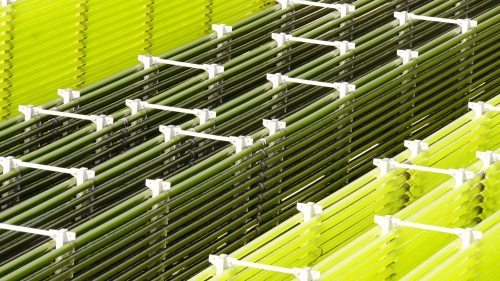Global microalgae company Allma has in July 2014 finalized a deal to supply its sun-grown chlorella to Portuguese group Frulact, which provides fruit-based ingredients to blue-chip food companies globally and markets jams, beverages and smoothies to consumers.
Both companies will develop an innovative ‘bubble tea’ containing tiny pearls of chlorella that provide a burst of nutrition in every sip.
Sofia Mendonça, business development manager at Allma tells Food News International of the market potential of chlorella in the food and beverage (F&B) industry.
FNI: What is chlorella? How is it used in the F&B industry in Europe, Americas and Asia?
Mendonça: Chlorella is a freshwater microalga, composed of a vast array of micronutrients.
Being a microorganism, it is visible only under a microscope.
Traditionally, chlorella has mainly been known as a dietary supplement ingredient, having being consumed as a source of vegetable protein, as an immune stimulant and as a detoxifying ingredient.
Within the food and beverage industry, chlorella is already incorporated into many food products in Asia, particularly in Japan.
In Europe, the trend for using chlorella beyond supplements is gradually growing – especially within the smoothies and natural juices industry.
Food formulators are now also showing a great interest in chlorella and there is currently much research and development work underway that is aiming to make use of this versatile ‘superfood’.
In America, chlorella is well known – again mainly within the dietary supplements sector, but it is also emerging within the smoothies and natural, healthy foods markets.
FNI: ‘Bubble tea’ was initially made popular in Taiwan and later to Asia. Could you share the market/consumer trend of this beverage in Europe?
Mendonça: Bubble tea is really starting to gain traction in Europe and I would say that we are only at the beginning of a steep growth curve for this exciting product concept.
There are already franchising companies opening small bubble tea stores across Europe.
A restaurant chain launched a range of bubble tea products in Germany two years ago with considerable success.
Bubble tea really is starting to be recognized and appreciated by consumers in Europe.
FNI: Why did Allma’s client Frulact decide to use chlorella in this ‘pearls’?
Mendonça: Frulact recognized the potential of chlorella as a superfood – particularly its naturalness and nutritional characteristics – and decided that such an ingredient deserved a product in a ‘wow’ format.
The technology for producing spheres with a liquid center – as found in bubble tea – is currently being industrialized at Frulact’s factories and it seemed only logical to combine it with the characteristics of Allma’s chlorella.
Essentially, it is a fun and pleasant way to consume healthy and natural ingredients, but it is also has a strong novelty and innovation factor, which makes it possible to create brand differentiation in a competitive marketplace.
FNI: How can food and beverage (F&B) manufacturers capitalize the use of chlorella in existing products?
Mendonça: Chlorella is extremely versatile.
It is a high quality source of vegetable protein and essential nutrients and it can enhance cereal based formulations – such as cookies, cereals, cereal bars.
It is also suitable for use in dairy products, fruit juices, soups and sauces, as well as in confectionery recipes.
FNI: What should manufacturers visit when working with chlorella?
Mendonça: Before choosing a supplier, companies should firstly check on the origin and species of the chlorella they are buying.
Not all microalgae species are approved as a food ingredient, but chlorella vulgaris – the species supplied by Allma – is.
In addition, the manner in which the chlorella is produced is important, because the quality of the final product will depend on that.
Then, ensure the supplier really understands chlorella and how it will behave in your food and beverage formulations, enabling you to get the very best out of this amazing ingredient.
FNI: What do you see the markets for chlorella in the next five years?
Mendonça: At this stage, we see natural juices and smoothies, snacks, confectionery and savory products as the key markets.
In addition, chlorella powder has potential in breakfast cereals and cereal bars, and yogurts and other dairy products.
We believe our chlorella will thrive in countries where consumers favor naturalness and are particularly interested in good health and nutrition.











